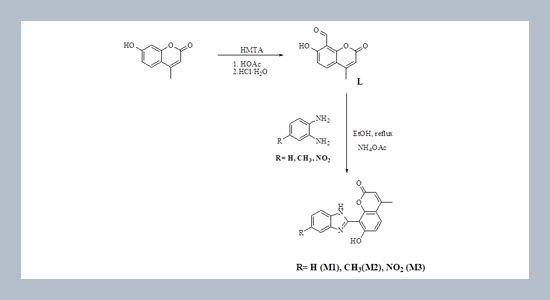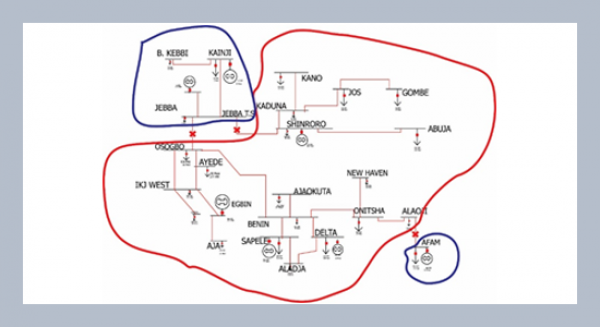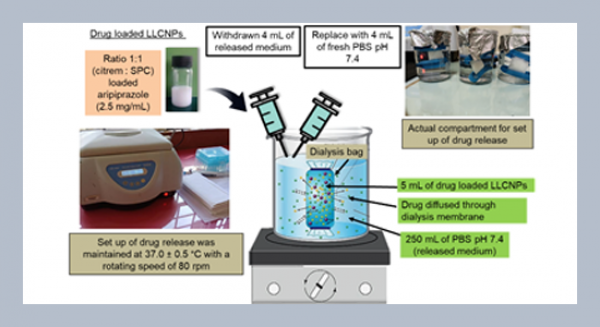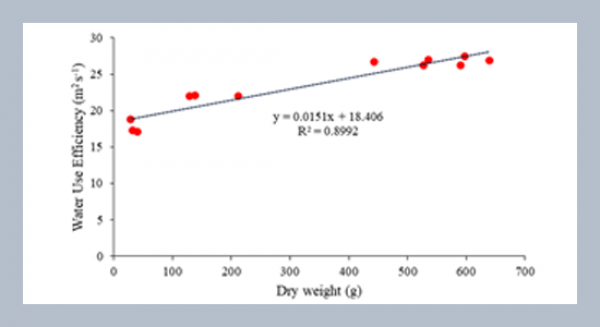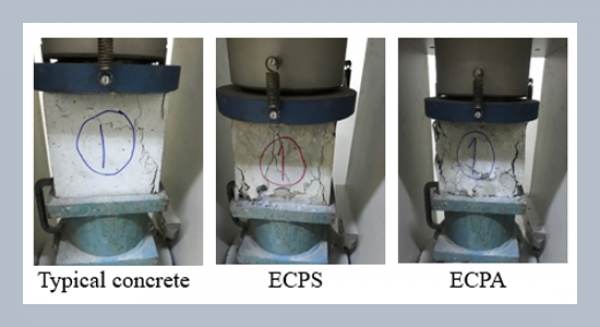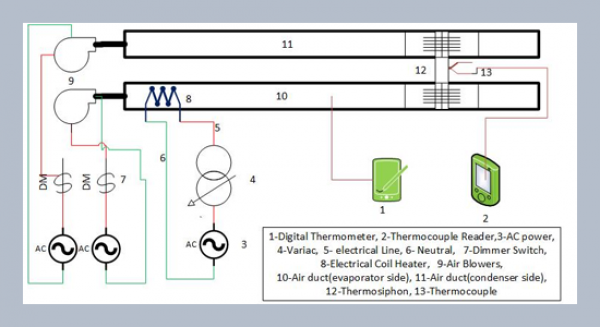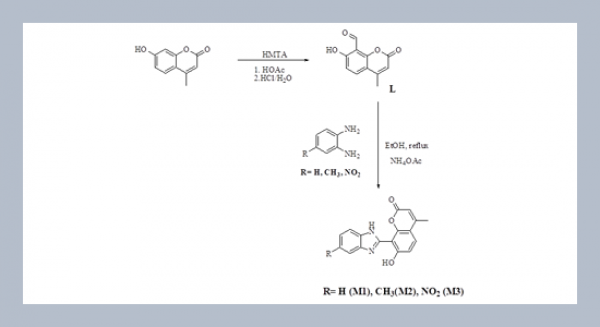REFERENCES
- Adamo, C., Jacquemin, D. 2013. The calculations of excited-state properties with time-dependent density functional theory. Chemical Society Reviews, 42, 845‒856.
- Devendhiran, T., Kumarasamy, K., Lin, M.C., Yang, Y.X. 2021. Synthesis and physical studies of coumarin-based chemosensor for cyanide ions. Inorganic Chemistry Communications, 134, 108951‒108960.
- Duan, Y-W., Tang, H-Y., Guo, Y., Song, Z-K., Peng, M.J., Yan, Y. 2014. The synthesis and study of the fluorescent probe for sensing Cu2+ based on a novel coumarin Schiff-base. Chinsese Chemical Letters, 25, 1080‒1086.
- Feng, Y., Yang, Y., Wang, Y., Qiu, F., Song, X., Tang, X., Zhang, G., Liu, W. 2019. Dual-funtional colorimetric fluorescent probe for sequential Cu2+ and S2‒ detection in biomaging. Sensors and Actuators B: Chemical, 288, 27‒37.
- Gunnlaugsson, T., Glynn, M., Tocci, G.M., Kruger, P.E., Pfeffer, F.M. 2006. Anion recognition and sensing in organic and aqueous media using luminescent and colorimetric sensors. Coordination Chemistry Reviews, 250, 3094‒3117.
- Haugland, R.P. 2002. Handbook of fluorescent Probes and Research Products, 9th ed.; Molecular Probe, Eugene.
- Honda, T., Ishida, Y., Arai, T. 2016. Effect of intramolecular hydrogen bonding on photocleavage reaction of (3-Benzazolyl-2-hydroxy-5-methylphenyl) methyl acetate. Bulletin of the Chemial Society of Japan, 89, 1321‒1327.
- Huang, P.J., Kumarasamy, K., Devendhiran, T., Chen, Y.C., Dong, T.Y., Lin, M.C. 2021. BODIPY-based hydroxypyridyl derivative as a highly Ni2+-selectivefluorescent chemosensor. Journal of Molecular Strucutre, 1246, 131281‒131289.
- Jung, H.S., Kwon, P.S., Lee, J.W., Kim, J.I., Hong, C.S., Kim, J.W., Yan, S., Lee, J.Y., Lee, J.H., Joo, T., Kim, J.S. 2009. Coumarin-derived Cu(2+)-selective fluorescence sensor: Synthesis, mechanisms, and applications in living cells. Journal of the American Chemical Society, 139, 2008‒2012.
- Kim, H.N., Lee, M.H., Kim, H. J., Kim, J.S., Yoon, J. 2008. A new trend in rhodamine-based chemosensors: Application of spirolactam ring-opening to sensing ions. Chemical Society Reviews, 37, 1465‒1472.
- Kim, S.H., Kim, J.S., Park, S.M., Chang, S.K. 2006. Hg2+-selective OFF-ON and Cu2+-selective ON-OFF type fluoroionophore based upon cyclam. Organic Letters, 8, 371‒374.
- Kruse, H., Georigk, L., Grimme, S. 2012. Why the standard B3LYP/6-31G* model chemistry should not be used in DFT calculations of molecular thermochemistry: Understanding and correcting the problem. Journal of Organic Chemistry, 77, 10824‒10834.
- Kumarasamy, K., Devendhiran, T., Lin, M.C., Chien, W.J., Ramasamy, S.K., Manickam, S., Yang, J. 2022. Synthesis and recognition behaviour studies of indole derivatives. Inorganic Chemistry Communications, 145, 110020‒110032.
- Kumarasamy, K., Devendhiran, T., Chien, W.J., Lin, M.C., Ramasamy, S.K., Liao, Y. 2023. Synthesis and recognition behaviour studies of benzimidazole derivative containing pyridine moiety. Journal of Photochemistry and Photobiology A: Chemistry, 445, 115067‒115076.
- Kwon, J.E., Park, S.Y. 2011. Advanced organic optoelectronic materails: Harnessing excited-state intramolecular proton transfer (ESIPT) process. Advanced Materials 23, 3615‒3642.
- Liu, H., Cui, S., Shi, F., Pu, S. 2019. A diarylethyelene based multi-functional sensor for fluorescent detection of Cd2+ and colorimetric detection of Cu2+. Dyes and Pigments, 161, 34‒43.
- Mercer, J.F.B. 2001. The molecular basis of copper-transport diseases. Trends in Molecular Medicine, 7, 64‒73.
- Puig, S., Thiele, D.J. 2002.Molecular mechanisms of copper uptake and distribution. Current Opinion in Chemical Biology, 6, 171‒180.
- Rae, T.D., Schmidt, P.J., Pufahl, R.A., Culotta, V.C., O′Halloran, T.V. 1999. Undetectable intracellular free copper: the requirement of a copper chaperone for superoxide dismutase. Science, 284, 805‒808.
- Sahoo, S.K., Sharma, D., Moirangthem, A., Kuba, A., Thomas, R., Kumar, R., Kuwar, A., Choi, H-J., Basu, A. 2016. Pyridoxal derived chemosensor for chromogenic sensing of Cu2+ and fluorogenic sensing of Fe3+ in semi-aqueous medium. Journal of Luminecence, 172, 297‒303.
- Sakai, K., Ishikawa, T., Akutagawa, T. 2013. A blue-white-yellow-tunable excited state intramolecular proton transfer (ESIPT) fluorophore: Sensitivity to polar-nonploar solvent ratios. Journal of Material Chemistry, 1, 7866‒7871.
- Saleem, M., Rafiq, M., Hanif, M., Shaheen, M.A., Seo, S-Y. 2018. A brief review on fluorescent copper sensor based on conjucated organic dyes. Journal of Fluorescence, 28, 97‒95.
- Santiago, P.H.O., Duarte, E.A., Nascimento, É.C.M., Martins, J.B.L., Castro, M.S., Gatto, C.C. 2022. A binuclear copper(ii) complex based on hydrazone ligand: characterization, molecular docking, and theoretical and antimicrobial investigation. Applied Organometallic Chemistry, 36, 1‒16.
- Sathiyan, G., Balasubramaniam, B., Ranjan, S., Chatterjee, S., Sen, P., Garg, A., Gupta, R., Singh, A. 2019. A novel star-shaped triazine-tripheylamine-based fluorescent chemosensor for the selective detection of picric acid. Materials Today Chemistry, 12, 178‒186.
- Sathiyan, G., Chatterjee, S., Sen, P., Garg, A., Gupta, R., Singh, A. 2019. Thiazolothiazole-based fluorescence probe towards detection of copper and iron ions through formation of radical cations. ChemistrySelect, 4, 11718‒11725.
- Sathiyan, G., Mathivanan, D., Bhuvaneshwari, B., Garg, A., Gupta, R.K., Singh, A. 2021. Olefin-linked conjugated fluorescent oligomer: Design, synthesis, photophysical studies and detection of nitroaromatic compounds (NACs) in aqueous media. Sensors and Actuators A: Physical, 331, 113026.
- Sathiyan, G., Skathivel, P. 2016. A multibranched carbazole linked triazine based fluorescent molecule for the selective detection of picric acid. RSC Advances, 6, 106705‒106715.
- Sathiyan, G., Thangamuthu, R., Sakthivel, P. 2016. Synthesis of carbazole-based copolymers containing carbazole-thiazolo [5,4-d] thiazole groups with different dopants and their fluorescence and electrical conductivity applications. RSC Advances, 6, 63196‒69205.
- Strausak, D., Mercer, J.F.B., Dieter, H.H., Stremmel, W., Multhaup, G. 2001. Copper in disorders with neurological symptoms: Alzheimer’s, Menkes, and Wilson diseases. Brain Research Bulletin, 55, 175‒185.
- Valentine, J.S., Hart, P.J. 2003. Misfolded CuZnSOD and amyotrophic lateral sclerosis. Proceedings of the National Academy of Sciences, 100, 3617‒3622.
- Venkatesan, V., Selva Kumar, R., Ashok Kumar, S.K., Sahoo, S.K. 2019. Dual optical properties of new Schiff base based on bisthiophene for sensing of Cu2+ in protic media. Journal of Molecular Strucutre, 1198, 126906‒126914.
- Waggoner, D.J., Bartnikas, T.B., Gitlin, J.D. 1999. The role of copper in neurodegenerative disease. Neutrobiology of Disease, 6, 221‒230.
- Williams, A.T.R., Winfiled, S.A., Miller, J.N. 1983. Relative fluorescence quantum yields using a compouter-controlled luminescence spectrometer. Analyst, 108, 1067‒1071.
- Yu, M., Shi, M., Chen, Z., Li, X., Gao, Y., Xu, J., Yang, H., Zhou, Z., Yi, T., Huang, C. 2008. Highly sensitive and fast responsive fluorescence turn-on chemodosimeter for Cu2+ and its application in live cell imaging. Chem, 14, 6892‒6900.
- Yuan, L., Lin, W., Yang, Y., Song, J., Wang, J. 2011. Rational design of a highly reactive ratiometric fluorescent probe for cyanide. Organic Letters, 13, 3730‒3733.



